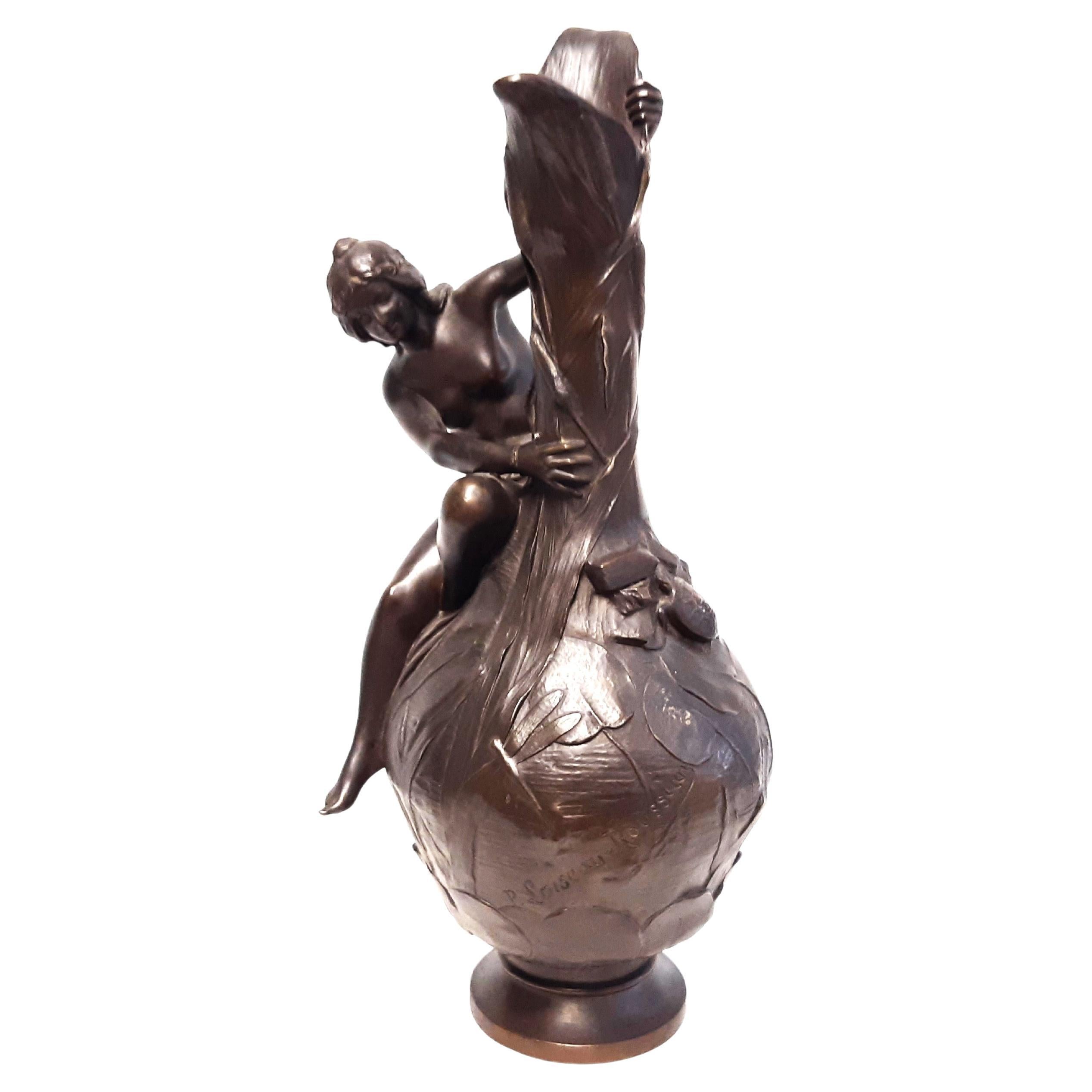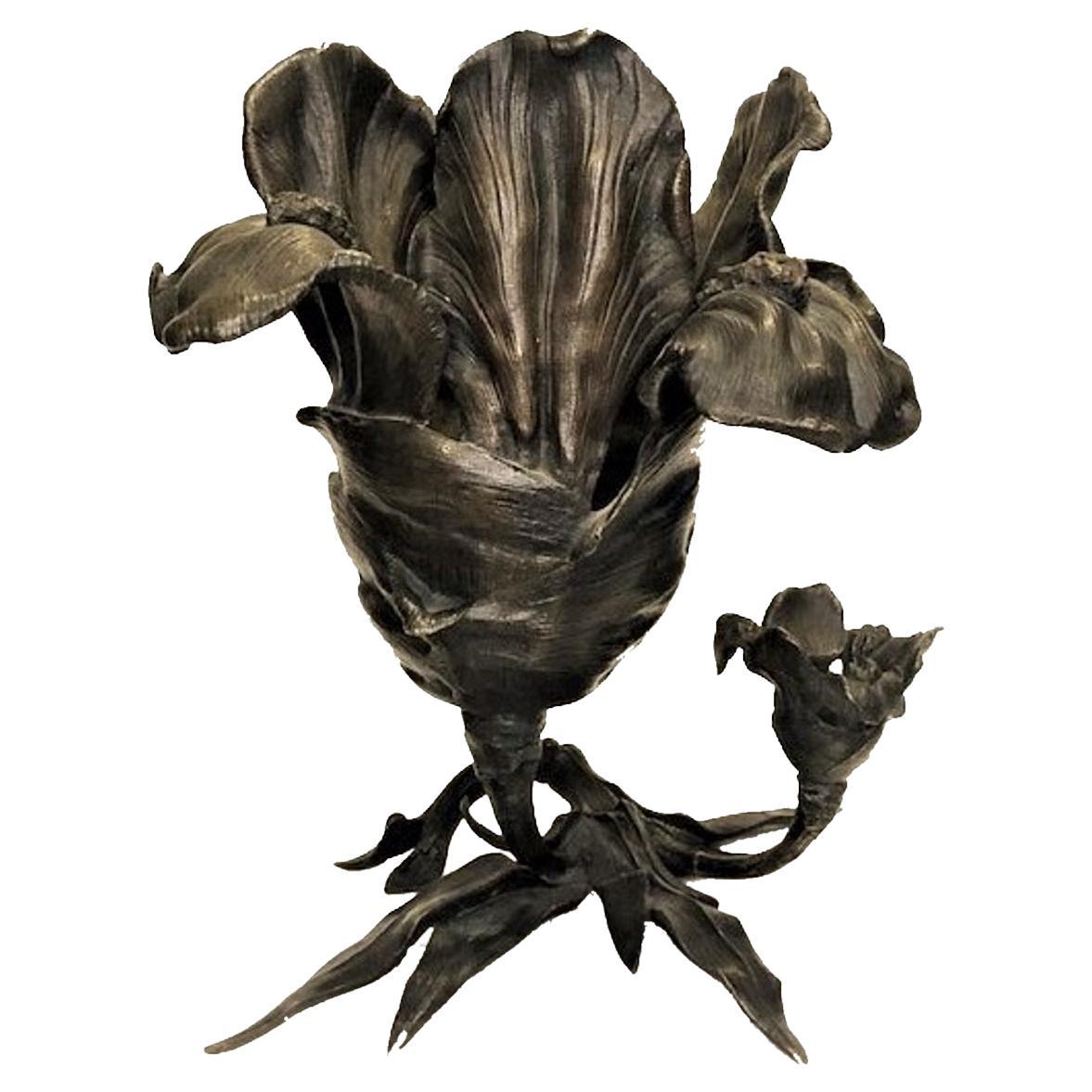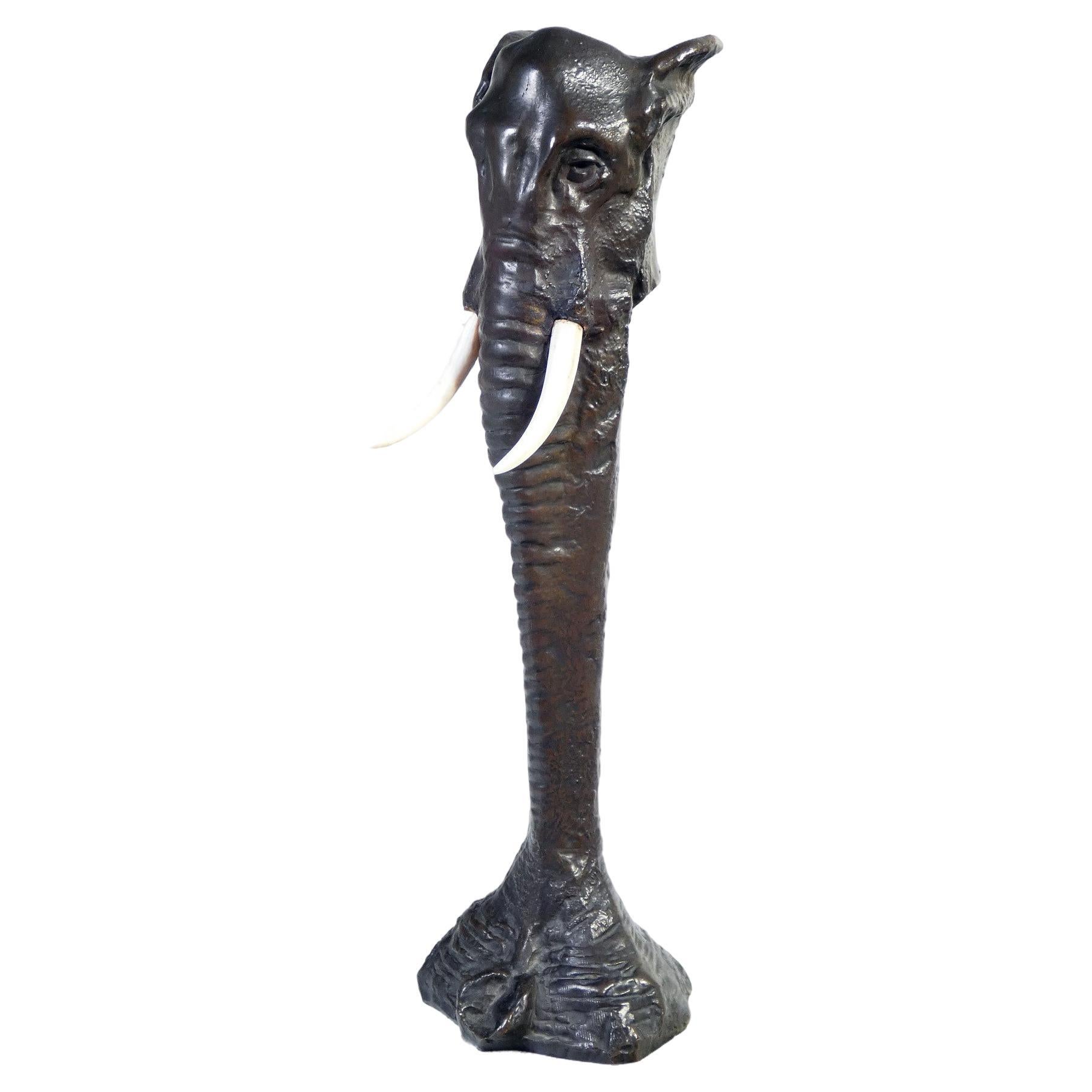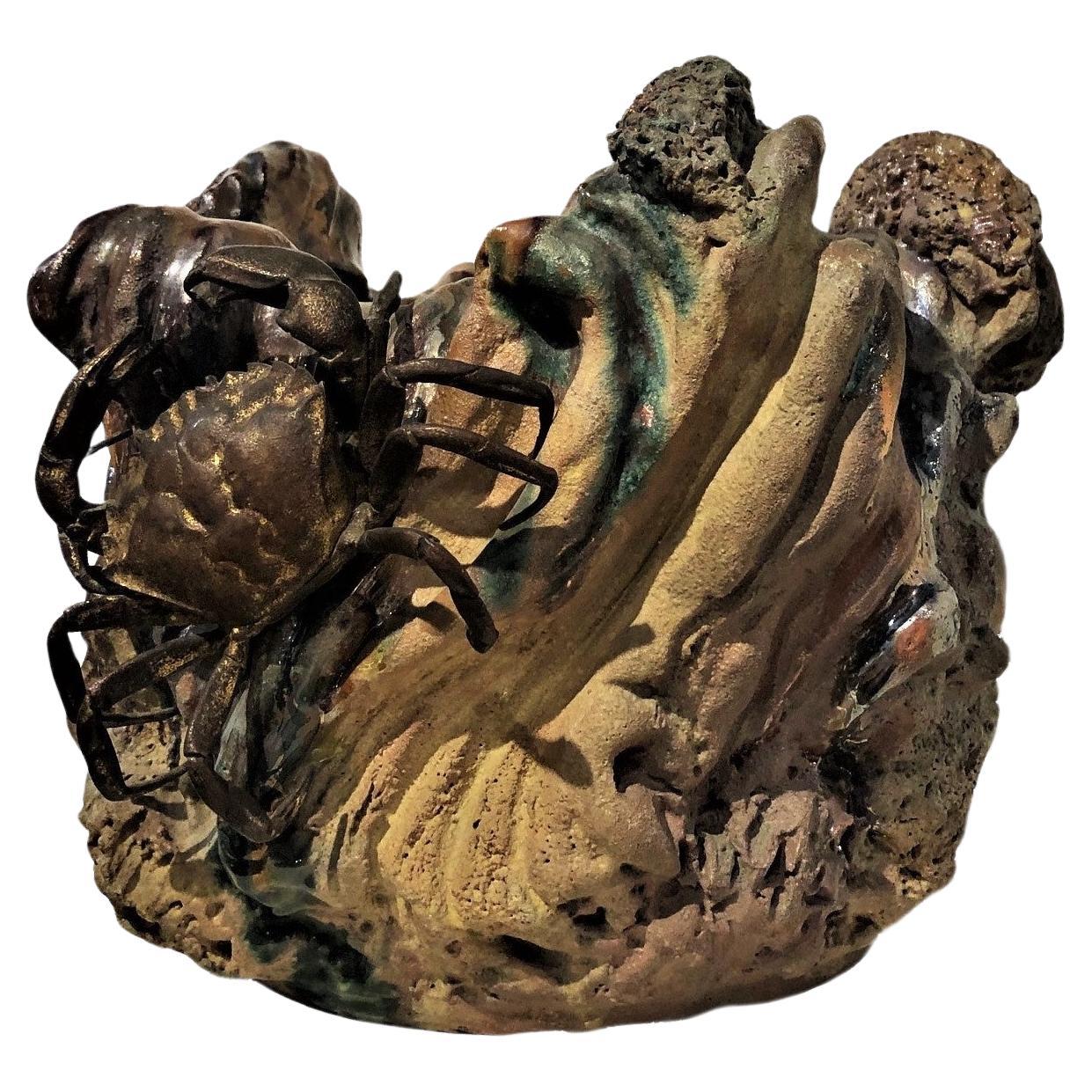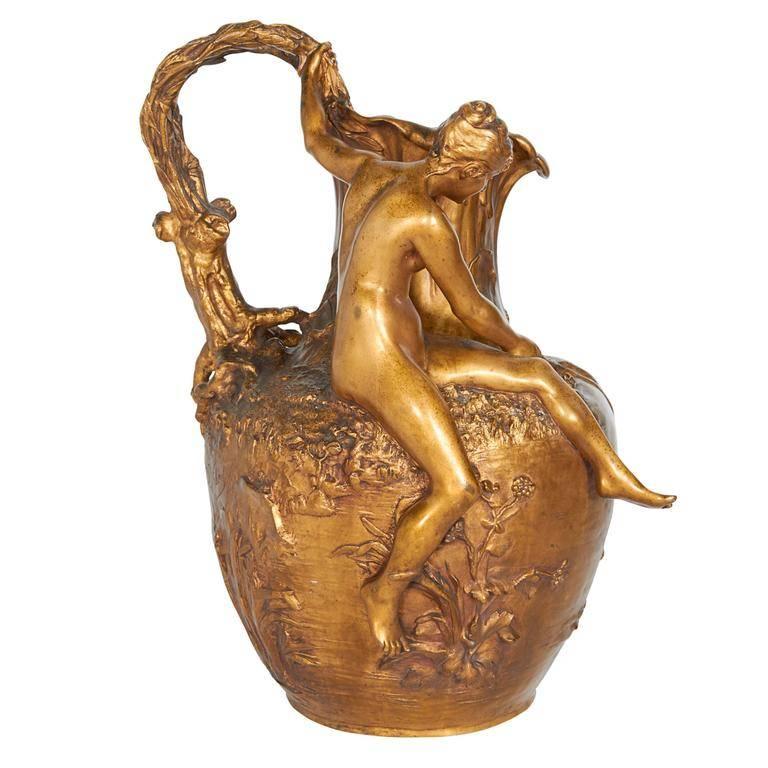Items Similar to Paul Loiseau-Rousseau, French Art Nouveau Gilt Bronze Jug, Ca. 1900
Want more images or videos?
Request additional images or videos from the seller
1 of 10
Paul Loiseau-Rousseau, French Art Nouveau Gilt Bronze Jug, Ca. 1900
About the Item
Paul Louis Emile Loiseau-Rousseau (French, 1861-1927) was a famous French sculptor. In his youth, he planned to devote himself to etching, was a student of Antoine-Louis Barye at the École des Beaux-arts in Paris and exhibited for the first time at the Salon in 1886. However, following soon after that health troubles and financial problems made him leave the Fine Arts temporarily.
Nonetheless, he then followed the evening classes of the sculptor, Théophile Barrau and presented at the Salons only a few works of small formats, which brought him success. He then obtained a scholarship in 1892, and was thus able to travel to Africa. His travels in Africa inspired him with Orientalist scenes and wild animal hunts. He then produced characters typical of this continent with a concern for ethnic realism and great anatomical precision. He was also interested in bullfighting and certain characters from the Middle Ages and the Renaissance.
His talent was noticed and he obtained the third place medal at the 1892 Salon; in 1895, the second place medal; and, finally, a gold medal at the Universal Exhibition of 1904. In 1893, he exhibited at the Salon, "Salem, African playing goumbri" in plaster; and in 1895, a "bust of a man from Sudan" in patinated plaster. In 1897, he successfully presented the marble and bronze bust of "Salem, a man from Sudan" at the Salon.
Paul Loiseau-Rousseau was appointed Knight of the Legion of Honor in 1901. Several of his Orientalist-inspired works can be seen in many French museums, including those in Amiens, Tourcoing and Nice.
- Creator:Paul Loiseau-Rousseau 1 (Sculptor)
- Dimensions:Height: 6.5 in (16.51 cm)Width: 4.75 in (12.07 cm)Depth: 3 in (7.62 cm)
- Style:Art Nouveau (Of the Period)
- Materials and Techniques:
- Place of Origin:
- Period:1900-1909
- Date of Manufacture:circa 1900
- Condition:Wear consistent with age and use. We make our best effort to provide a fair and descriptive condition report. Please examine photos attentively, as they are an integral part of the description. Send us a message to request more details or discuss price.
- Seller Location:New York, NY
- Reference Number:1stDibs: LU2819331161052
About the Seller
5.0
Vetted Seller
These experienced sellers undergo a comprehensive evaluation by our team of in-house experts.
Established in 1993
1stDibs seller since 2017
68 sales on 1stDibs
Typical response time: 2 hours
- ShippingRetrieving quote...Ships From: New York, NY
- Return PolicyA return for this item may be initiated within 10 days of delivery.
More From This SellerView All
- French Art Nouveau Patinated Bronze Sculptural Iris Vase, ca. 1900Located in New York, NYABOUT IRIS The iris is a special and mysterious flower. Not only because of its striking appearance, but also from an artistic and historical point of view. It is also like a work of art, as though created by Mother Nature. The unique leaves of this plant not only create wonderful shadow casts, but also look as if they were painted by hand. It's no wonder that iris acts as the muse for countless artists, and can be seen in many famous works of art. The iris was first spotted in the time of Pharaoh Thutmose, in 1504 BC. He had the iris inscribed into the wall reliefs of a temple as a sign of his power, as well as decorating his sceptre with motifs of the flower. Since then, the iris has been a symbol of victory in Egypt. But the symbolism of the iris goes further than that. In Japan, the flower represents courage and is the symbol of the boys' festival. In Islamic cultures, the iris is a symbol of prosperity. In Europe, the flower was a popular weapon symbol in the Middle Ages and stood for chivalry. And in Christianity, the iris was seen as a symbol of the trinity because of its three-part flowers. With more than 300 varieties, the iris is now the most popular flower among growers and gardeners following the rose. Countless artists use the iris in their works and the flower is present in all eras. You can see the flower on furniture, vases, jewelry, fabrics, sculptures, coats of arms and much more. Did you know that the iris is also called the sword lily? It's not a coincidence that it used to symbolize physical and emotional pain and suffering caused by a weapon. We also see the flower in religious art, where it's often associated with Mary and Jesus. The iris is also associated with the Greek goddess Iris, where the flower symbolizes reconciliation and divine messages. This is also reflected in many paintings. Finally, the iris is also visible in Dutch and Flemish still-life paintings. This can be in a religious form, incorporated into an object or as a decorative flower. In the Art Nouveau art movement, the iris (along with other plants, such as the birch) was often used as an expression of feminine beauty. With its almost otherworldly appearance, the iris is perfectly suited to the Art Nouveau aesthetic and is featured in many well-known works of art. The poet of that era, Hermann Hesse...Category
Antique Early 1900s French Art Nouveau Planters, Cachepots and Jardinières
MaterialsBronze
- French Art Nouveau Iridescent Stoneware & Bronze Vase or Cachepot, ca. 1900sLocated in New York, NYFrench Art Nouveau Ocean Life Theme Vase Cachepot Iridescent Stoneware & Patinated Bronze Crab Appliqué ca. 1900s ABOUT We present here a most unusual and utterly decorative Fren...Category
Antique Early 1900s French Art Nouveau Vases
MaterialsStoneware
- Alexandre Vibert, French Art Nouveau Figural Gilt Bronze Ewer, circa 1900By Alexandre VibertLocated in New York, NYAn Art Nouveau gilt bronze lobed ewer by Alexandre Vibert (French, 1847-1909), produced within the early 20th century period, depicting a classical nude female figure on the bank of ...Category
Antique Early 1900s French Art Nouveau Urns
MaterialsBronze
- Charles Vital-Cornu, French Art Nouveau Bronze Sculptural Floral Vase, 1900sBy Charles Vital-CornuLocated in New York, NYCharles Vital-Cornu (French, 1851 - 1927), Jouffroy’s and Pils’ pupil, he acquired a skillfulness mastery in carving marbles and producing bronzes. He used several patinas in his production. Indeed, if his pieces' embodiments are often golden-brown colored, the hollow part are darker. His figures, hands, faces, and bodies are of a great quality. Charles Vital-Cornu had participated in numerous annual ‘‘Salons’’ organized in Paris by ‘‘la Société des Artistes Français’’ where he got several awards, such as a mention of Honor in 1880 and 1881, a third class medal in 1882, a travelling grant in 1883, a second class medal in 1886, a bronze medal at the 1889 World Fair and, finally, a silver medal at the 1900 World Fair at the Grand palace...Category
Antique Early 1900s French Art Nouveau Vases
MaterialsBronze
- French Art Nouveau Grand Bronze Iris Candelabra, ca. 1900Located in New York, NYABOUT IRIS MOTIFS Iris motifs were popular during the Arts & Crafts movement. The genus of this easy-to-stylize flower has nearly 300 varieties that bloom in many colors—thus its nam...Category
Antique Early 1900s French Art Nouveau Candelabras
MaterialsBronze
- Japanese Art Nouveau Awaji Ware Art Studio Pottery Flower Vase, ca. 1900sLocated in New York, NYJapanese Art Nouveau Flower Vase Awaji Ware Art Studio Pottery ca. 1900s ABOUT AWAJI WARE ART STUDIO POTTERY Awaji pottery was made on the Japanese island of the same name between...Category
Antique Early 1900s Japanese Art Nouveau Vases
MaterialsPottery
You May Also Like
- Art Nouveau Bronzevase Loiseau-RousseauBy Paul Loiseau-Rousseau 1Located in Aachen, DESchwere patinierte Jugendstil-Bronzevase von Paul Louis Émile Loiseau-Rousseau um 1905 (* 20. April 1861 in Paris, Frankreich; † 1927 ebenda), signiert.Category
Antique Early 1900s French Art Nouveau Figurative Sculptures
MaterialsBronze
- Vase in the shape of an Elephant's Head, signed Louis LOISEAU-ROUSSEAU (1861-1927)By Paul Loiseau-Rousseau 1Located in Torino, ITVase in the shape of Elephant Head, signed Louis LOISEAU-ROUSSEAU (1861-1927). ORIGIN France PERIOD Early twentieth century AUTHOR Louis LOISEAU-ROUSSEAU (1861-1927) MATERIALS Br...Category
Early 20th Century French Art Deco Vases
MaterialsBronze
- Art Nouveau Vase, Jug, Signed A, Vibert, Circa 1900.By Alexandre VibertLocated in Saint-Ouen, FRArt Nouveau vase, jug, signed A, Vibert, circa 1900 . Gilt bronze vase, jug, Art Nouveau style, 1900, signed A, Vibert. h: 21cm, w: 17cm, d: 13cmCategory
20th Century French Art Nouveau Vases
MaterialsBronze
- Pair of French Art Nouveau Gilt Bronze VasesLocated in New York, NYPair of French Art Nouveau gilt bronze vases with handles with floral design and female heads. (PRICED AS PAIR).Category
20th Century French Art Nouveau Vases
MaterialsBronze
- Bronze Inkwell "Repos" Gustav Gurschner ca. 1900 Austrian Art Nouveau JugendstilBy Gustave GurschnerLocated in Klosterneuburg, ATInkwell "Repos" (rest), Gustav Gurschner, probably Paris World Exhibition 1900 This bronze inkwell was created in the context of the 1900 ...Category
Antique Early 1900s Austrian Jugendstil Vases
MaterialsBronze
- Stoneware and Gilt Bronze Art Nouveau Vase by Paul Louchet .By Paul LouchetLocated in Saint-Ouen, FRStoneware and gilt bronze Art Nouveau vase by Paul Louchet . Early 20th century Art Nouveau stoneware and gilt bronze vase by Paul Louchet. Dimensions: h: 36cm, d: 13.5cmCategory
20th Century French Art Nouveau Vases
MaterialsBronze
Recently Viewed
View AllMore Ways To Browse
Paul French
Bronze Nouveau Vase
Art Nouveau Vase Bronze
Art Nouveau Gold Vessel
Gold Jug
Small Art Nouveau Vase
Antique Jugs And Vases
Antique Jug Vase
Antique Small Jug
Art Nouveau Etching
Cast Jugs
Gilt Art Nouveau Vase
Wild Hunt
1895 French Vase
African Orientalist Art
Art Nouveau Jug
Rousseau Bronze
Youth Bedroom Furniture
